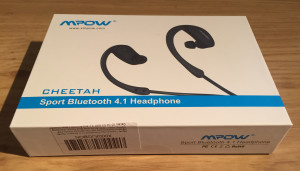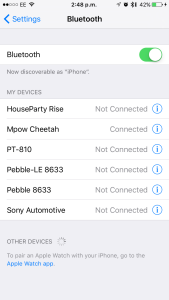Rating: ★★★★☆
PROS:
- Excellent build quality
- Good transfer speeds and connection stabilty
- Mountable to your desk with supplied adhesive strip
CONS:
- Host USB cable might be a little short for desktop PC users
RRP £26.99, best price at time of writing £17.99 on Amazon
1byone were kind enough to send me one of their popular 7-port USB hubs for me to try out. I’m always running out of USB ports on my computer, so I was keen to put this one through the paces and see if it could keep up with my heavy demands!
This isn’t just any old USB hub – it’s built with a very nice aluminium chassis and has a very solid feel in the hand. It’s compatible with both USB 2.0 and 3.0 devices and will work in a USB 2.0 or 3.0 port on your PC – albeit naturally with slower transfer speeds over USB 2.0 as you’d expect.
The packaging for this product is very simple and to the point – something I like to see. No fiddly plastic to have to cut up and no unnecessarily large box. Inside the box you get the USB hub together with a mains power adapter supplying up to 3A of power as well as the power supplied by your host USB port. You also get an adhesive strip, which can easily be affixed to the bottom of the hub for permanent mounting on your desk.
The design of the hub is minimalistic, but it employs a higher level of build quality than many other competing products. The 1byone hub is made with aluminium to strengthen the device and look good on your desk.
The USB hub can be powered independently of your computer with the supplied power adapter if required – in most cases this will be necessary to power all ports sufficiently. If you’re not using all of the USB ports at the same time, you might get away with not having the power supply to hand, but I’d recommend keeping it plugged in all the time.
So how well does the hub work? I conducted some tests, putting the hub under full load with all 7 ports filled to see how well it handled multiple connections. When connected to the mains, the hub was able to successfully connect all of my devices to the host PC without any intermittent communications or drop-outs. Without the power supply, the hub struggles much more but that would be completely understandable given the power constraints.
Data transfer speeds were fairly good over USB 3.0 – all of the onboard ports are USB 3.0 capable and when I connected my USB 3.0 memory stick it achieved very decent transfer speeds for both reads and writes – very close to what it could achieve when directly connected to my PC.
The hub also has a single charging port onboard. When the hub is plugged into the mains, it’ll keep that port powered even if your computer is switched off, so that you can charge up any of your mobile devices. When your computer is switched on, any of the ports can be used for charging. I found this feature to be particularly helpful, as I could leave devices like my phone plugged into the hub overnight to charge without needing to leave my computer on.
If I had anything I’d like to see improved on the device it’d be the length of the built-in host USB cable on the hub. For laptop users a shorter USB cable is likely to be better and means less cable clutter on the desk, but it was just a little too short to comfortably reach the back of my desktop PC case and sit on the desk where I wanted it. As the USB cable is permanently fixed into the hub it leaves little option of extending it – except with a USB extension cable, which is likely to lead to reduced data transfer speeds. This makes it difficult to confidently give the device 5 stars and is the only reason I’m giving it 4.
Other than that minor complaint, I’m very happy with the hub. Not once did I run into any trouble connecting any of my USB devices and I didn’t experience a single device connection drop-out. This is without doubt a very well built USB hub that will stand the test of time. It’s just a shame that the host USB cable isn’t a tiny bit longer or extendible.

